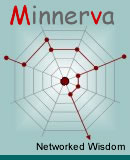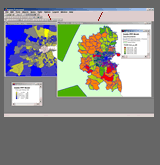
 |
Minnerva has supported SDG
in modelling public transport for schemes to introduce rapid transit
type systems into the cities of Leeds and Dublin. Much of the work was concerned with estimating trip matrices through combining information from bus surveys, bus electronic-ticketing machine data, and from rail-based PT matrices. The project was also concerned to produce a combined public transport matrix, rather than the separate bus and rail matrices that had been used hitherto, but in order to model the interaction between the modes it was necessary to analyse and enhance aspects of the public transport network modelling. An important requirement
of the public transport demand modelling was to segment the demand
on the basis of valuations of time by travellers. This was because
Stated Preference surveys had shown some travellers had unusually
low valuations of time. Once the demand had been segmented, it was
necessary to adapt the modelling to cater for multi-class public
transport assignment. (Contact: Miles
Logie)
|

|
|
